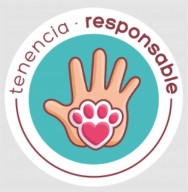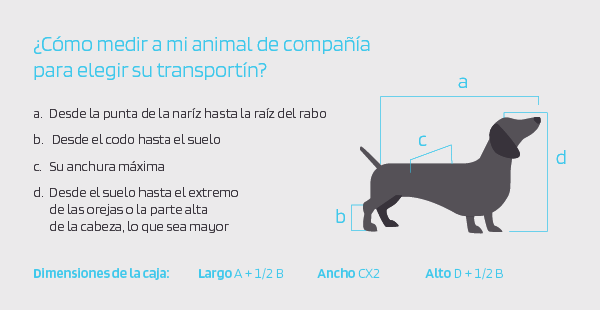Alsa is fully committed to providing safe and quality transport for our customers’ companion animals.
With this objective, in 2018 it joined the “ Travelling Together is Better” programme (Viajar Juntos es Mejor), created by Purina España and the Spanish Confederation of Travel Agencies (CEAV) with the collaboration of the Ministry of Agriculture, Fisheries and Food (MAPA). Thanks to this initiative, we are collaborating with veterinarians and professional experts from Purina and MAPA who can advise us and help us take measures to improve the travel conditions for companion animals on our services.
In addition, Alsa is also collaborating in the RESPONSIBLE COMPANION ANIMAL OWNERSHIP campaign by MAPA to guarantee animal welfare and establish attitudes and practices for responsible animal ownership.
Alsa is currently working on adapting its services and travel conditions for companion animals in accordance with the new Law 7/2023 for the protection of the rights and welfare of animals, so as to guarantee compliance with each and every one of their rights when travelling with us, while also providing a safe and comfortable journey for the rest of our customers.

* Assistance dogs are not subject to the content of this instruction and can travel at no extra cost inside the passenger compartment (sitting in the central aisle) and with proper documentation, accompanied by the blind person or owner of the animal (Article 11 - Traffic Rules).
Conditions for travelling with companion animals on the bus
- A maximum of one (1) companion animal per service is allowed, where “companion animal” is understood to be limited to dogs, cats and ferrets weighing no more than 10 kg.
- The animal will travel in the hold of the vehicle, always inside a carrier or another type of safe, closed crate supplied by the passenger and equipped with a leak-proof base to retain droppings.
- Veterinary experts recommend refraining from travelling with companion animals on dates and at times when the ambient temperature is above 25ºC. Check official weather forecasts.
Steps to follow before travelling
Travel requirements
You are responsible for your companion animal, which is why, for your animal to be able to travel safely and comfortably, we would like to remind you of the requirements that need to be met during the trip:
These obligations are there to guarantee the protection and comfort of the companion animal during transportation.
- Animals must be over 12 weeks of age.
- They must be electronically identified with a microchip.
- They must be accompanied by the necessary documentation identifying the animal and up-to-date with all regulatory vaccinations for the region of origin and destination (health card or passport, updated and in force).
- They must be dewormed internally and externally.
- The animals must be completely healthy, with no injuries and able to move unaided.
- Pregnant females are not allowed to travel, nor any that have given birth within one week.
- You must bring a rigid carrier that cannot be opened from the inside, suitable for the size of your companion animal and smaller in size than the space in the bus that we will indicate depending on the category of bus in which you are going to travel.
Recommendations before travelling
- Get puppies and kittens accustomed to transportation conditions during the socialisation period.
- Pay a visit to the vet during the week prior to travelling to make sure the animal is in good health.
- Wash the animal the day before, to avoid bad smells.
- Don’t feed animals during the 6 hours prior to departure.
- Encourage the animal to relieve itself and take it for a walk 30 minutes before the journey commences.
- Leave a toy inside the carrier that can’t be swallowed.
- Provide a drinking bowl and water for the journey.
- Have contact details of a vet at your destination.
- Make sure you have the “luggage” necessary for the animal: food, food bowl and drinking bowl, medication, toys, lead, halter, comb, poo-bags and items for your animal to sleep.
- Have the animal wear an identification plate with a contact telephone number to make it easier to locate in the event of getting lost.
- Make sure the animal is going to be accepted in its destination accommodation and that your activities at your destination will allow you to care for your animal.
We have been given advice from the veterinary team of the Ministry of Agriculture, Fisheries and Food (MAPA) and Purina. Those recommendations may be altered in accordance with the documents approved in the Plan of Action for Responsible Companion Animal Ownership (PATRAC).
Great! With these steps, the companion animal is all ready to travel. But as you know, it has to travel in an approved carrier that is safe for your companion animal.
How to know what is the right size carrier?
The size of the carrier has to be suitable for the size of the animal, complying with the following approximate dimensions

In summary, the dimensions of the carrier will be:
- Length: the length of the animal measured from the tip of the nose to the base of the tail + 15 cm approximately.
- Width: 2.5 times the width of the animal approximately.
- Height: height of the animal measured from the ground up to the top of the head + 15 cm approximately.
Check that:
- The companion animal will travel in a carrier or crate appropriate to its size and will be secured in such a way to ensure that it does not become displaced with the movement of the vehicle.
- Carriers or crates must be made of non-toxic, non-disposable materials, easy to clean and disinfect. One complete side of the carrier will consist of the door, and will be made in such a way that it cannot accidentally open, neither from the outside nor from the inside.
- The carrier must have an absorbent pad so that excrements do not leak out.
- Provide water every 8 hours at the most.
Day of travel
Arrive at the boarding point with your animal at least 15 minutes early and place the carrier into the bus following the driver’s instructions.
The animal will also be taken off the bus by its owner or the person appointed to do so. If possible, this should be done in the absence of others in order to prevent uncomfortable or dangerous situations that could affect other passengers. The compartments will be cleaned and disinfected once the animal has been unloaded.
At stops along the way, it is recommended that the animal is unloaded in order to provide it with food and/or drink as required and so it may relieve itself outside the compartment.
Conditions for transporting companion animals with Alsa follow and comply with the requirements under domestic and European regulations.
 Español
Español
 Català
Català
 Français
Français
 Galego
Galego
 Italiano
Italiano
 Português
Português
 Euskara
Euskara
 Deutsch
Deutsch

